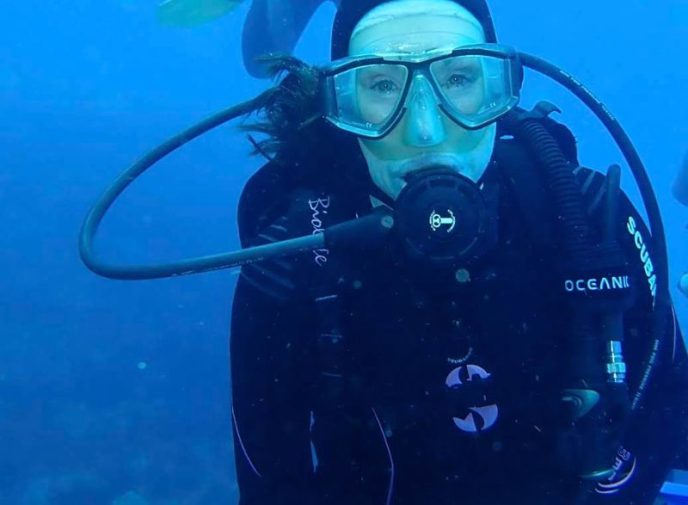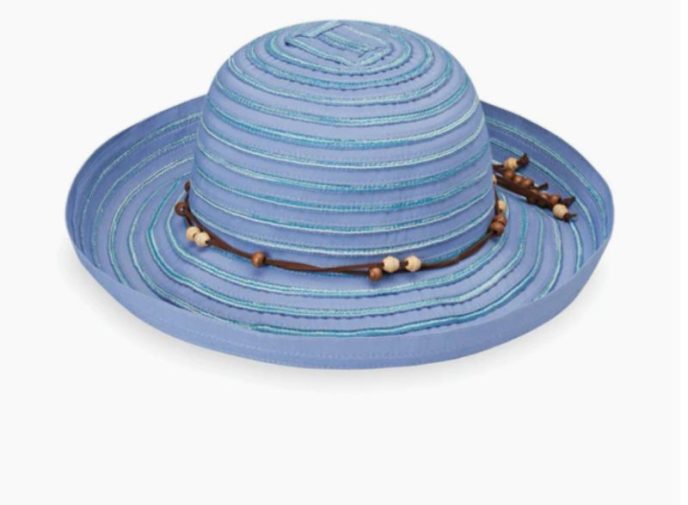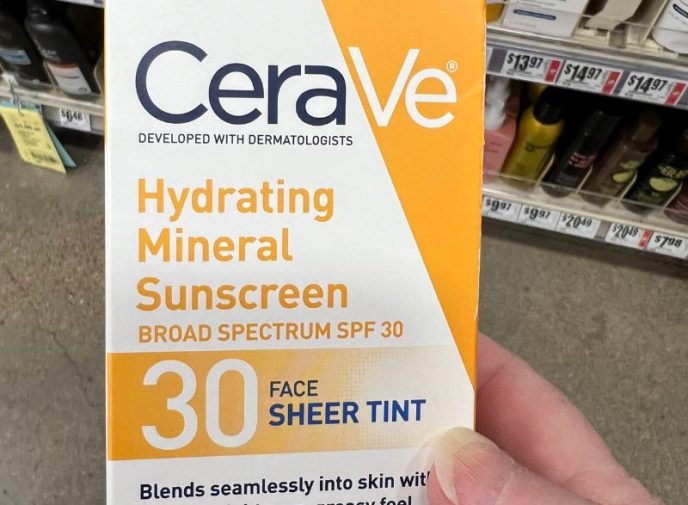Here’s my confession: Cruising is my second-greatest passion. My first passion is scuba diving. For recreational open water divers, the No. 1 priority, beyond the safety of yourself and your dive buddy, is protecting the delicate reefs we visit. That sentiment applies to most cruise travelers I’ve met as well. So how do we reconcile protecting ourselves from the harmful effects of the sun’s rays with protecting the watery environment we cherish?
It’s not an easy question to answer, and it’s one that grows increasingly more challenging as we learn how harmful some chemicals can be to sea life, and ultimately to humans. For me, finding a good answer has recently become far more important than ever before. My skin cancer diagnosis was honestly not a big surprise. I’m fair-haired and fair-skinned and grew up in the ‘60s and ‘70s before sun protection was a thing.

I had surgery twice in late 2023 and am awaiting my third. The plastic surgeon and his nurse warned me that each of my 2-inch-long facial scars would not tolerate any sun exposure. They would turn red and stay that way for the rest of my life without proper protection. Game on. I dove straight into researching the best and worst methods of sun protection. Here’s what I know so far.
When it comes to protecting both your skin and the world’s reefs, fabric is best
You probably already know this intuitively, but covering your skin is the best option for preventing damage from the sun. The bonus is that staying sun safe with fabric is also safer for the ocean — no matter where you are. Let’s not forget that even if you don’t plan to enter the ocean on your cruise, chemicals you use on your body can still find their way into the ocean.
There are two kinds of ultraviolet radiation that come from the sun. Both can damage our skin — UVA and UVB. Fabric, in general, has the ability to block both. But all fabrics are not equal when it comes to sun protection. You’ve no doubt encountered clothing labeled with UPF numbers. That stands for ultraviolet protection factor and is like the SPF numbers found on sunscreen labels, but with some key differences. According to the Skin Cancer Foundation, UPF measures the amount of ultraviolet rays able to penetrate a fabric and reach your skin. But it’s a little tricky. A UPF of 50 doesn’t mean it screens out 50% of the UV radiation. It’s much better than that. It means only 1/50th of the UV rays can penetrate the fabric. That’s a very safe 2% getting through.
Covering up sounds good in theory until you start packing for a cruise loaded with water sports in Tahiti or sightseeing in Rome in August. What works best (and is comfortable) in each of these situations? The basics are to cover as much skin as you can with garments made of tightly woven fabrics. Dark or bright colors, and shiny fabrics are best. Hold the fabric up to the light. If you can see through it, it will let UV rays penetrate to your skin.

David Krease, Windstar’s merchandising manager, makes sure that onboard shops carry sun-safe products. “Before I worked for Windstar, I lived in the Virgin Islands,” he tells me. “Being a person prone to sunburn myself, I have tried many, many different products for sun protection. A BVI-based brand, HIHO (go-hiho.com), was one of my favorites in the VI because of the quality and unique art, so I brought their products to Windstar. In French Polynesia, we carry UPF apparel from Coolies Surf (cooliesurf.com). They also manufacture some of our crew uniforms for the beach events, so our guests buy the same quality UPF clothing that we trust for our crew.”
What to wear to stay sun safe in the water
Keep in mind that all but the densest fabrics will lose some of their ability to protect when they get wet because the threads stretch and create tiny openings for the UV rays to pass through. Wearing a cotton T-shirt over your swimsuit to go snorkeling sounds like a good way to protect your back and shoulders until you learn the hard way that a T-shirt only has a UPF of around 7. Get it wet and the protection factor drops closer to 3.
For most water sports, consider something as simple as yoga pants and a long-sleeved rash guard. When I scuba dive or snorkel, I wear a wetsuit or a thinner “dive skin” if the water is too warm for a wetsuit. I wear swim shorts and a rash guard underneath. I like my rash guard to have a hood that I can pull up to protect both the top of my head when I’m standing in or near the water and the back of my neck and ears while I’m snorkeling or swimming face down.
I never cruise to warm destinations without a “salty” hat along with a collection of clean hats and caps. By designating one hat or ball cap as the salty one, I am less hesitant about ruining it by wearing it with hair that is wet with salt water.
I also wear a UPF neck gator. I can pull it up to cover my lower face and lips when UV conditions are extreme and my face is out of the water, like when paddle boarding or walking along the beach. My plastic surgeon warns to protect my lips at all cost because as he said, “You sure don’t want me cutting on those.”
If you plan to wear swim capris or knee-length swim shorts for snorkeling, here’s a diver’s trick. Take along a pair of knee-high stockings that are thin but not see-through. Slip those on before you put on your fins. You’ll protect the back of your calves from sunburn and avoid blisters from the swim fins at the same time. Even better protection comes from shiny dive socks.
Think loose-fitting when it comes to comfortable sun-safe clothing for sightseeing in hot climes
The trick to staying cool and covered on dry land is to keep it loose. But keep the dense fabric rule in mind. Those gauzy cotton Caribbean sundresses and Cuban-style men’s cotton shirts aren’t really going to provide much sun protection. Thankfully, shopping for UPF clothes has become easier. I have a cute little black UPF dress that I’d even wear to dinner in Amphora.
For daytime sightseeing, I’d throw on a colorful silky-thin long-sleeved button-up UPF shirt with loads of pockets. Once you start looking, you’ll be surprised at all the places to shop for UPF clothing. What used to be a sporting goods store exclusive can now be found almost everywhere. I even recently found options at Tractor Supply and Chico’s. An extra-large, colorful UPF neck gator functions as a multi-purpose accessory. Use it to cool down by wetting it from your bottled water, or it can be a head scarf if needed for touring sensitive religious sites, and for sun and wind protection for your face if conditions call for that.
I used to be a sandal person, but for better sun protection of the tops of my feet, now I lean toward canvas kicks for city walking (get some snazzy ones that can double as your evening shoes) or hiking shoes if the touring involves uneven terrain. Water-trekking shoes are ideal for heading out on boating excursions where your feet might get wet.

Hats are where you can make your sun-safe fashion statement while you tour. Go with the big floppy look, the sophisticated safari explorer, or the casual ball cap. The goal is to cover your head and provide shade for your face.
Don’t forget your sunglasses. Not only will you be protecting the skin around your eyes, but the American Academy of Ophthalmology says harmful UV rays can contribute to cataracts, macular degeneration, and even eye cancer. Big sunglasses provide the most protection but read the labels to make sure your shades filter both UVA and UVB radiation. For those who need prescription sunglasses, glasses with magnetic clip-ons are all the rage, as are “cheap” sunglasses you can order online with your prescription.
What about sunscreen?

Let’s get the basics out of the way first. Sunscreens are creams, sprays, or even powders that, when applied to skin, prevent some of the sun’s harmful UV rays from damaging our skin for a short period of time. Sunscreens are rated by SPF, which stands for sun protection factor. Unlike UPF ratings for fabrics, SPF does not tell you how much ultraviolet light is getting through to your skin. Instead, it’s an imprecise number that rates the product’s ability to protect skin from sunburn. It’s imprecise because we all sunburn at different rates.
It’s a myth that the number is related to how much more time you can stay in the sun than you would be able to without sunscreen. The U.S. Food and Drug Administration says this, “SPF is not directly related to time of solar exposure but to amount of solar exposure.”
The agency goes on to explain that the amount of solar exposure varies by time of day and, more importantly for cruisers, latitude. The main thing to know about the SPF number is that it is a scale to rank products against each other. It’s designed so consumers know a product with an SPF of 15 will provide less protection than one with an SPF of 30. That should not, however, be construed as the SPF 30 having twice as much protection as the SPF 15.
How to decipher a sunscreen label beyond the SPF
Sunscreens (and really any product with an SPF) are labeled with two sets of ingredients — active and inactive. The active ingredients are the ones that protect your skin from UV rays and are what the SPF is rating. The inactive ingredients make up the carrier base for the active ingredients and include anything else the product claims to do for you like moisturize or tint your skin.
Among the most common active ingredients are the chemicals oxybenzone, avobenzone, octinoxate and octocrylene. These chemical active ingredients soak into your skin where they absorb UV rays, so your skin doesn’t have to. (It’s why the label says to apply 15-30 minutes before exposure to the sun. They require time to soak in.)
According to the Journal of Clinical and Aesthetic Dermatology, oxybenzone and avobenzone absorb UVA radiation. Octinoxate and octocrylene absorb UVB radiation. For a chemical sunscreen to be labeled as having “broad spectrum” protection (protecting your skin from both radiation types), it would need some percentage from each pair of chemicals.
Common active ingredients that are mineral based are zinc oxide and titanium dioxide. Mineral sunscreens are absorbed a little, but not too deeply, and basically sit on or near the top of your skin, creating a barrier that reflects the UV rays. Zinc and titanium block both UVA and UVB radiation, making them naturally broad spectrum.
To protect the oceans, think mineral not chemical sunscreens

Researchers at Stanford University are among scientists around the globe that have shown that oxybenzone does not dissipate in the ocean, but rather collects on reefs where it is metabolized by corals and anemones, causing often catastrophic harm to their DNA. Other corals are harmed indirectly when the protective layer of algae they rely on dies off in the presence of the chemical, leaving the coral exposed to disease and bleaching.
In 2018, Hawaii initiated the first governmental ban on sunscreens containing oxybenzone and avobenzone. In 2023, they became the first to ban octinoxate and octocrylene. Some of these chemicals have since been banned in the U.S. Virgin Islands, Aruba, Bonaire, Palau, and Key West, Florida, as well as Cozumel and Playa Del Carmen in Mexico. Other destinations have no official bans, but strongly suggest visitors avoid chemical sunscreens. The consensus thus far is that the reefs and other marine life will be safest if we stick to ingredients that come from the earth. Zinc and titanium fit that bill.
While some sunscreens are labeled as “reef safe,” that’s a marketing term, not an official designation. I have found “reef safe” on labels having all sorts of combinations of chemicals and minerals. Look instead for the word “mineral” on the label, then double-check the active ingredients to make sure it lists only zinc oxide and/or titanium dioxide, and no chemicals.
My choice as a skin cancer survivor, avid cruiser and scuba diver who is determined to cause the least harm to the oceans as possible, is to cover up with protective clothing and supplement with mineral-based sunscreens. If you find yourself having underestimated the sun’s intensity at your destination, simply stop by the ship’s onboard shop for selections of clothing and sunscreens that work for you.





